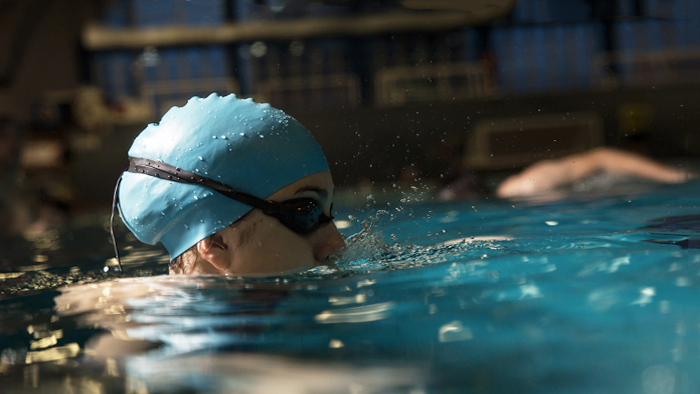As coaches our job is to help our athletes to perform to the very best of their ability. There are many ways to get there and TrainingPeaks helps us do this efficiently by providing us with the tools to monitor and evaluate performance.
One metric many of us use to quantify training load is Training Stress Score (TSS), a number which can be used to monitor fitness and fatigue over time. For coaches, this number is particularly useful in designing annual training plans as well as individual sessions. It gives us great insight into the training our athletes do. However, if coaching was as simple as designing training programs based on a TSS number, all coaches would be trained in mathematical modeling. Before long, our role would be obsolete because computers would be doing the job of planning, prescribing and evaluating training for us.
The good news is that coaching requires far more than a “paint-by-numbers” approach to be effective. This is because TSS is only reflective of measured physical stress the body is exposed to during training. Rather, as the ancient Greeks well knew and contemporary scientists in endurance performance are only now beginning to focus on, both the body and the mind are important to training adaptation and fatigue. Furthermore, life demands (both cognitive and physical) experienced away from the competitive environment must be accounted for when designing a training program, as well as mental demands in relation to training and competition. Doing so takes far more skill than arranging numbers in a formulaic manner.
Endurance athletes experience mental demands away from training and competition that appear to be typical for their sport. In particular, the time commitment required for performing at a decent level as a recreational athlete exceeds that of many other recreational sporting activities. After speaking with endurance athletes in a range of endurance sports we* identified that this time commitment makes endurance athletes feel guilty. For example, some athletes mentioned that they feel guilty for not spending time with their family and friends. As a result athletes may feel more pressure to perform well in races. That is, an athlete may tell themselves that they must perform well because they have made so many sacrifices. This illustrates how the demands experienced away from training and competition can have an influence on the experience of (negative) pressure on race day. More importantly, this can negatively affect the enjoyment athletes experience when they are taking part in their sport and they may push through injury because of these feelings of guilt. We also found that endurance athletes experience stressors related to training, race prep and on race day. Specifically, athletes worried about doing the right types and amounts of training, they sometimes lacked commitment when training alone in unpleasant weather, encountered stress and problems before their races had even started, felt uncertain about their pacing decisions, had to overcome adversities during races (e.g., equipment malfunction, tough conditions), and (surprise, surprise) commonly encountered pain and exertion.
What are the implications of this for coaches? First and foremost, coaches need to be aware of these pressures, or stressors, and they should help athletes to reframe these stressors. Three approaches can be taken in relation to dealing with these stressors:
- To focus on removing or reducing the stressors
- To change the psychological response to the stressor
- To minimize the impact that negative performance consequences resulting from the stressors may have
Let’s have a look at each of these approaches, and focus on what the coach can do to help.
1. Focus on removing or reducing the stressor
Endurance athletes may feel worried about how to get to an event, or feel stressed about their pacing plan for an event. Coaches can play a role here in educating the endurance athlete about what to expect, for example, what does the course look like? If they have traveled to the venue before, what were the traffic and parking like? How early should the athlete aim to arrive? If there are hills in the course, this is also something that the coach can help an endurance athlete with if they are worried about pacing. Helping the athlete to visualize the course can also reduce the pressure for an athlete who is worried about the unknown. Other aspects that can be helpful to discuss with an athlete could be their nutritional plan and tips on how to stay warm when waiting for the event to start. Coaches could also promote the use of breathing strategies, which can help to calm an athlete down before a race and distract them from worries.
2. Changing the psychological response to the stressor
It is not always feasible to remove a stressor. For example, in endurance events it is common for athletes to experience pain or discomfort, and although you could remove the discomfort by withdrawing from the endurance activity, this could lead to dropping out from endurance sports all together. Instead, endurance athletes can learn to prepare for the stressor and plan mental or behavior actions to deal with this during the event. This is what we refer to as “if-then planning.” The idea is to have a response ready for potentially negative states, including unhelpful emotional responses and negative thoughts such as feeling very worried, wanting to give up, feeling frustrated, or barriers that an athlete may come across such as a missed water stop or another competitor falling in front of you. This plan can be focused on thoughts, or on behavioral actions as in “what will I do if …” Imagine that you work with an athlete who regularly stops cycling full-out a few seconds before the end of each interval, and you find out that the athlete is telling themselves that they want to give up. The if-then plan could look as follows: “If I feel like giving up before the end of a tough training session, then I will tell myself that training sessions are supposed to be harder than race day, and that I can keep going.” The idea behind if-then planning is to have an automatic response readily available for potentially detrimental thoughts and therefore it is important that an athlete practices these if-then plans regularly. A coach could also encourage athletes to recall positive training or previous race experiences when they experience negative thoughts such as finding it difficult to stick to their race plan.
3. Minimize the impact that negative performance consequences resulting from the stressor may have
There may be occasions when an endurance athlete encounters numerous stressors that interfere with their performance. For example, they may feel pressure to perform well because they have spent time and money into preparing for the event, they felt that this came at the expense of their family and friends, and as a result they may ignore an injury. Afterward, an endurance athlete may feel guilty or upset as a result. A coach could help an athlete to make sense of their experiences, human beings have a tendency to focus more on negative experiences than positive experiences. For example, a coach could help the athlete to manage their performance expectations, to prevent the athlete from blowing themselves up early on in a race, or berating themselves after the finish. A coach could also help the athlete to reflect on their positive experiences during the race. This may not always be obvious for the athlete, but try to think outside of the time-based outcome here. For example, did the athlete manage to adjust their pacing plan? What about their water strategy? Building on their strengths, rather than ruminating too long on the negative experiences, will help the athlete to maintain motivated and enjoy the endurance activity for a sustained period of time.
Thanks to Dr. Carla Meijen (University of Kent, Endurance Research Group) and Dr. Alister McCormick (University of St Mark & St John) for their valuable contributions to this article.
References
- McCormick, A. et al. (2016, November 17). Psychological demands experienced by recreational endurance athletes. Retrieved from https://www.tandfonline.com/doi/abs/10.1080/1612197X.2016.1256341



